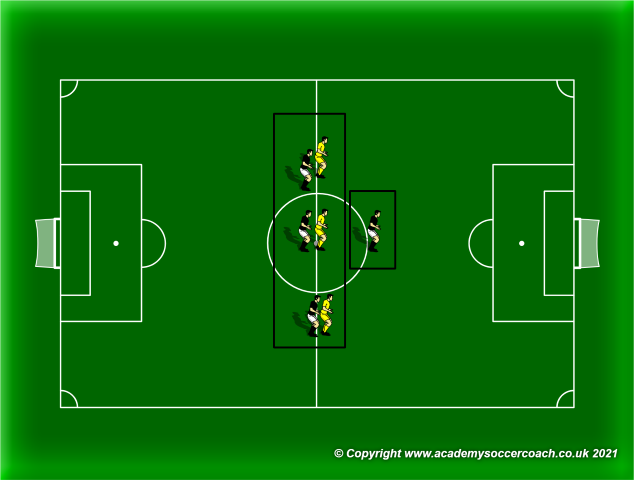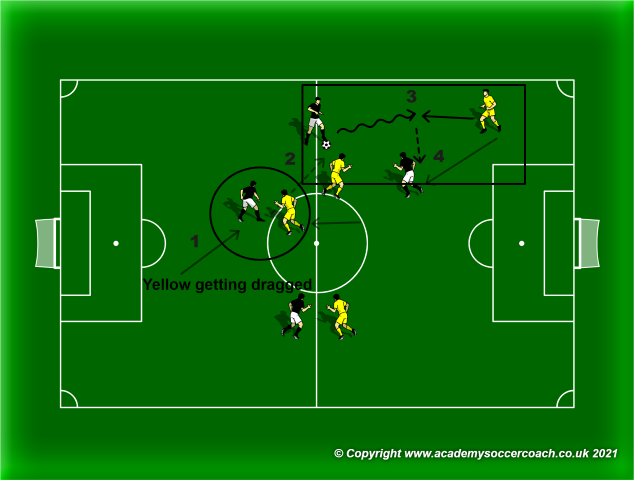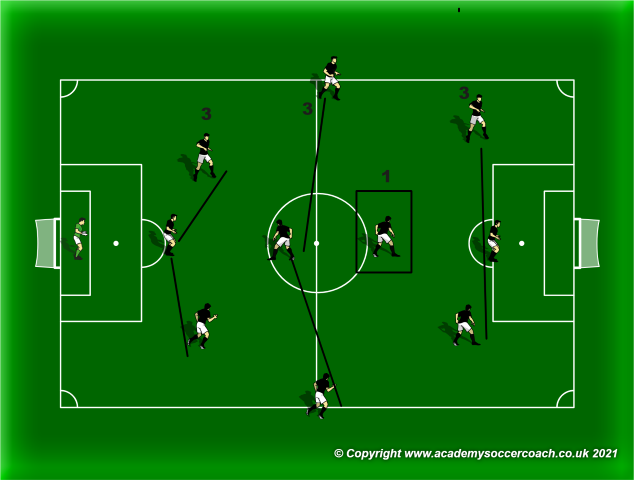By Danny Carvalho
Question - “In a recent game, the opposition would leave three forwards near the half line when we were attacking and near goal. I told my players that we needed four players back to cover them, but this left us short of numbers when attacking. How would you deal with that?"
This decision is totally dependent on your players’ ability to create chances and score their opportunities. If you can’t trust them to finish the play and you believe that they are always going to give your opponents the opportunity to counterattack you, then the best option is indeed to have numbers up on defense. Another thing to consider is the context. Is the team losing? Is the game tied? Are you winning? If you really need to score and the numbers of players up the field are not enough to get you a goal, you are absolutely going to need to take risks and get more players to run up and overload the opponents on the final third.
Another way of seeing it is that the attackers should be good enough to create opportunities as this is the usual setting of teams when attacking: always have one more defender than opponents to prevent being overloaded in a transition and teams usually find a way to attack and score with one less player than the opponents defending.
Let’s go over some plans!
1 - Keep a back 3+1 instead of a back 4
I first came up with this plan to try and get a more offensive formation but not give up the concept of having +1 in a possible transition to defense. Keep three players to watch their three forwards and have your fourth player perform as a CDM (Center Defensive Mid) helping to build the attack but also near the opponents’ forwards to quickly double up on the one who can possibly get the ball in a transition.

2 - Teach them to drag players off their position
This is a concept that every professional team who looks to build from the back in a possession-based style of play masters and takes advantage of. It consists on having the player on the ball dribbling to attract an opponent. As this happens, a player near the play can make either one of the following decisions: a) gets open to support and receive the ball; b) make a run to attract a second player, leaving space for the player on the ball to dribble into or to allow a third player to support.
By doing this, you get your defenders to build the attack and participate with quality, getting numbers enough on the final third to create opportunities plus ensuring that your team doesn’t get exposed to counterattacks. See the example below.

(1) Center back dribbles the ball to attract his direct opponent
(2) Left back gets open and receives the pass
(3) Left back dribbles forward to attract opponents’ right back
(4) Left winger gets open after his direct opponent got dragged and receives a pass
3 - Play on a 3-3-1-3 formation when attacking
Following the #1 plan but going deeper on the strategy, you’ll have three center backs, one CDM and two wingbacks, an attacking mid, two wingers and a striker.
This way you ensure to have a 3v3+1 on the defensive third as well as a 7v7 on the opponents’ half.
On the attacking side, the 3-1-3 gives you width and depth as well as good passing angles. On each side the team will always have two options and on center the team have three options. Players get well distributed, making it hard for defense to cover the ground.
On the defensive side, this formation gives you many options to adapt when possession is lost. One of the center backs can become a 2nd CDM, the wingbacks can drop back on defense, and this gives you a 4-2 formation. If you keep the CAM up and have the wingers drop back you have a 4-4-2 or a 4-4-1-1. If you have the CAM drop and the wingers staying up, you have a 4-3-3. If you get the one center back to become a CDM, the former CDM and the CAM to become CMs, and the wingers to drop, you now have a 4-1-4-1. All up to you to assess your teams’ strengths and figure it out the best way to do it.

By Danny Carvalho, DOC at Corinthians Campinas Youth Club, Brasil


